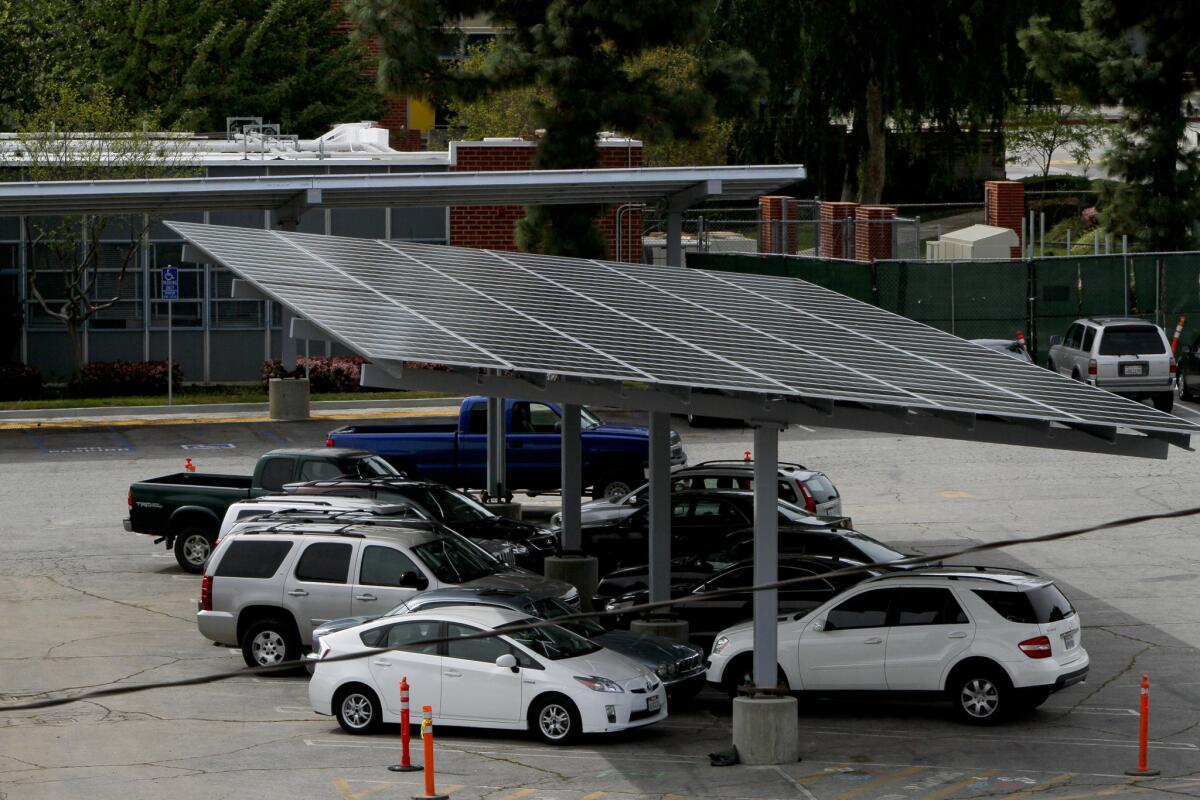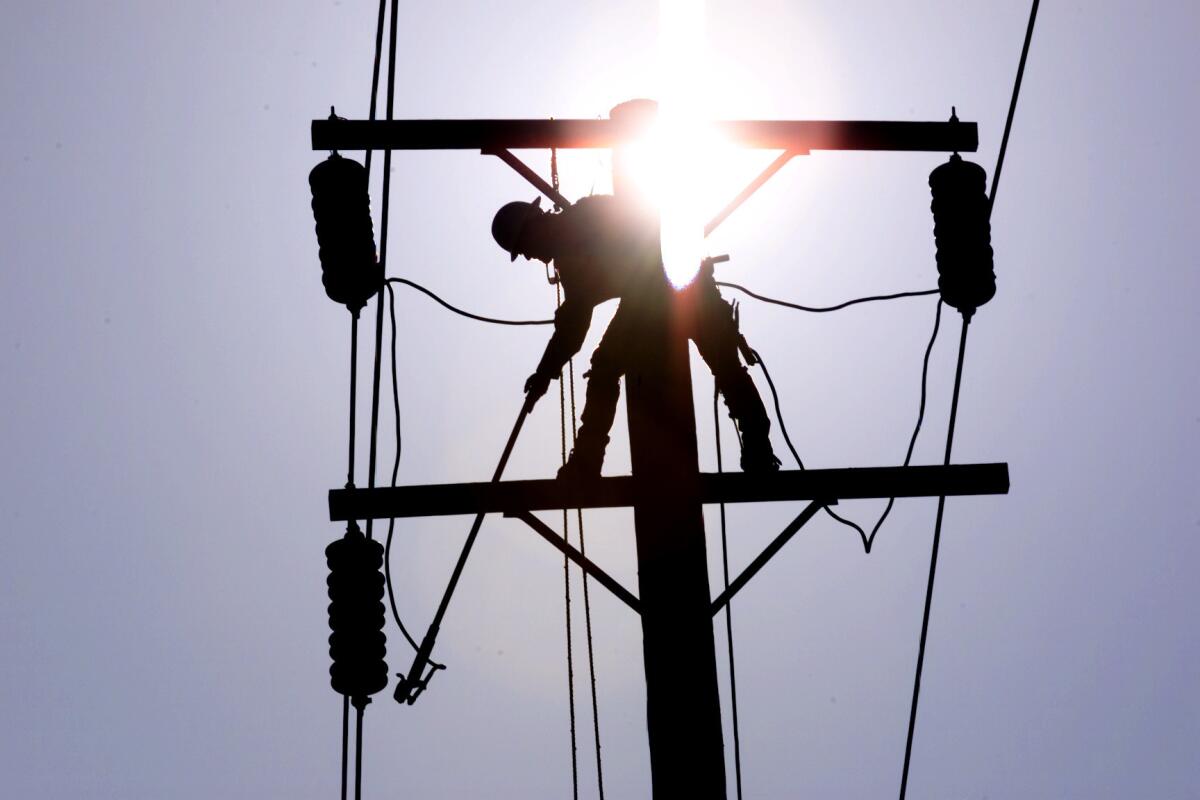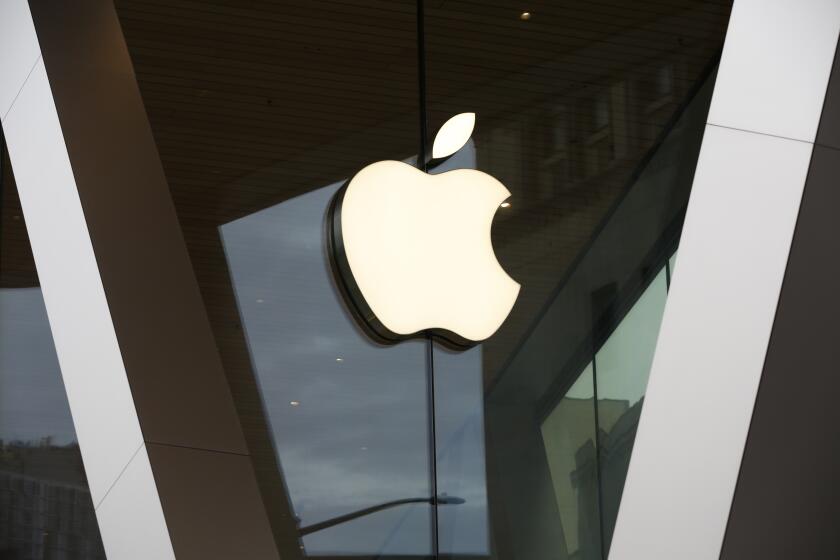Public energy programs save customers money — at least in the beginning

- Share via
Southern California Edison customers looking to cure their power-bill pain might find some relief in Los Angeles County’s new government-run energy program — but the track records of similar public energy efforts show that the initial cost advantage doesn’t last.
From California to Massachusetts, the kinds of community energy programs that L.A. County approved this month lowered electricity bills 5% to 40% when they began.
But after an initial honeymoon period, the savings have tended to shrink.
In many cases, the electricity-cost difference between the old utility and the newer competing public program has declined to a few cents a month on customers’ bills. In some cases, the cost advantage for the new rivals has disappeared altogether.
And California’s investor-owned utilities just tossed another complication into the mix.
Customers who leave the traditional utilities should pay a higher fee for electricity bought on their behalf that no longer is needed, according to a proposal filed with regulators by Southern California Edison, San Diego Gas & Electric and Pacific Gas & Electric. Increasing the fee included with each month’s bill would further reduce any cost difference.
Still, proponents of the government-run operations, called Community Choice Aggregation programs, or CCAs, contend that they offer benefits to all electricity users beyond cost savings.

How public power works
The public programs replace some of the functions performed by traditional, investor-owned utilities such as Edison.
The government-run operations take on the role of purchasing power as well as developing their own sources of electricity, such as by placing solar panels atop roofs or canopies on parking lots.
In doing so, they compete against the utilities in securing power contracts and finding suitable spots for developing sustainable power projects.
But Edison, SDG&E and PG&E still must collect money from all utility customers to pay for maintenance of power lines, substations and other resources that help make up the electric grid.
“They’re responsible for system reliability,” said Steve Hoffman, a retired president of power company NRG West. “All of those costs are still going to be borne by CCA customers.”
Much of the economic benefit to consumers comes from the utility — government-run or investor-owned — that can secure the best deal and save consumers money.
But there’s an additional benefit: As the government-run energy programs push for more clean energy, Edison and other investor-owned utilities increasingly must consider that consumers might want wider use of solar or wind power rather than fossil fuel sources such as natural gas or coal.
“CCAs do provide pressure on the utilities,” Hoffman said.
How well is public power performing?
About a half-dozen states operate community choice aggregation programs, including California, Illinois, Massachusetts, New Jersey, Ohio and Rhode Island.
In Illinois, utility customers participate in the government programs at a higher rate than in any other state. About 60% of the state’s utility customers are enrolled in community energy programs, down from as high as 80% when the initial savings was a third of the cost at the investor-owned utility.
Illinois offers utility customers broad flexibility to switch between the investor-owned utilities and the government-run programs.
As older, higher-priced contracts ended, investor-owned utilities negotiated better deals that allowed them to offer more competitive prices to retail customers.
“Basically, [the investor-owned utilities] had a high-note mortgage and refinanced it at a lower rate,” said Mark Pruitt, principle at the Illinois Community Choice Aggregation Network.
Chicago was the biggest Illinois town to join the public power push. But only two years later, in 2015, city officials decided to get out of the business of supplying energy and returned about 750,000 households, or about 2 million people, to the investor-owned utility because prices had become more competitive.
Scott Tess, environmental sustainability manager for Urbana, Ill., said the majority of the utility customers in the college town are enrolled in the government program. He said it sometimes is difficult to see savings from month to month because electricity usage and prices fluctuate.
“There are quarters of the year where we haven’t competed as well,” Tess said. “It’s actually hard to see $5 or $10 savings per month. It’s actually year to year that you see the savings.”
Greening the Cape
In Cape Cod, where Maggie Downey runs Cape Light Compact, the nation’s oldest community choice aggregation program, about 65% of ratepayers have stayed with the public energy plan even though it isn’t always the cheapest.
Over the 15 years that the Cape Light Compact has operated, a residential customer would have paid on average about $6.30 more a year for electricity but also would have gotten increasingly clean options, culminating with the recent introduction of a 100% renewable energy selection.
“It brings in more choices,” said Downey, whose program serves 207,000 customers. “We never say we’re the lowest price. If we bought today, the price could change. The price could go up.”
Giving customers the ability to choose clean energy is one of the major benefits of community energy programs, beyond any potential savings, proponents argue.
Marin County’s version
About 255,000 utility customers are part of California’s oldest community energy program that began in Marin County in May 2010. That’s 83% of the eligible customers in the service area.
Over the life of the program, electricity costs for those customers were cheaper than PG&E about 70% of the time.
“Right now, our rates are barely less than theirs,” said Jamie Tuckey, a spokeswoman for the program in Northern California, dubbed MCE . “But it’s less.”
The typical MCE residential customer pays about $97.75 a month for electricity from 50% renewable energy sources such as solar power, which means the program already meets the state’s mandate that utilities get half of their power from clean sources by 2030.
That compares to a typical PG&E customer bill of $98.30 a month for an electricity mix of about 33% from renewable sources, including about 13% from solar.
MCE and PG&E also offer 100% clean energy options. MCE’s 100% clean energy program increases monthly costs by about $4 to a typical residential bill, while PG&E’s comparable program adds about $13.
“We’ve seen their rates reduce. They’re also even offering 100% renewable option,” Tuckey said.
“I think a lot of that,” she said, “is spurred by the competition that CCAs are creating in California.”
Follow me at @ivanlpenn
ALSO
MIT researchers create a robot that can 3-D-print a building in hours
As the industry struggles, is it ‘time to recognize the nuclear show’s over’?
Trump is creating a void on climate change. Can California persuade other states to help fill it?
More to Read
Inside the business of entertainment
The Wide Shot brings you news, analysis and insights on everything from streaming wars to production — and what it all means for the future.
You may occasionally receive promotional content from the Los Angeles Times.











